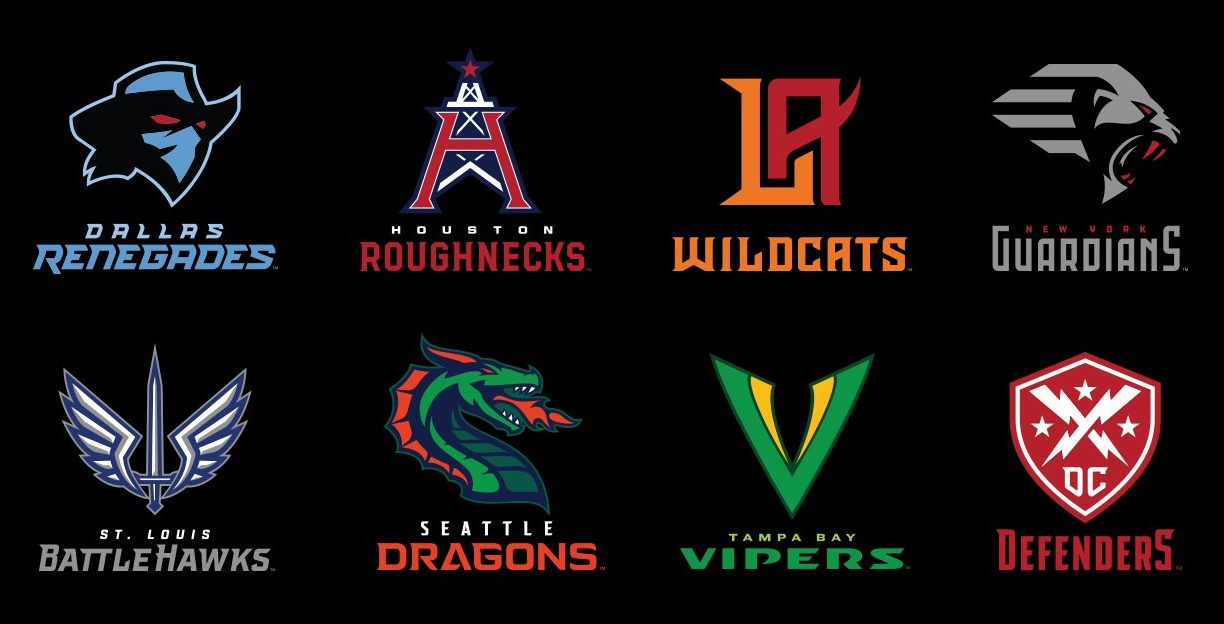Just as some folks had gone through the five stages of grief to reach “acceptance” with XFL team names and logos, which are now baked in to XFL fan consciousness, it was discovered that the league had trademarked five names for each team. One of the five was chosen, leaving four unused. We got a sneak peek at the Seattle team names some time ago, which caused debate amongst XFL fans about which one should be used – Dragons, of course, won out.
Now that the curtain has been pulled back a bit and a little more of the process is revealed, what can we learn about the league’s thinking as team names were selected? Some conclusions I’ve drawn in looking over the abandoned names:
1. Patterns emerge: Each set of names contains at least one nickname without an “s” on the end. The original XFL in 2001 (in)famously featured only half the league using plurals in its team names. This could be mere coincidence, or it could’ve been a concerted effort on the part of the XFL to possibly try the tact again. Perhaps if they had chosen that direction, each team would follow that same pattern; therefore, you can almost identify what each team name would be had they went with that grouping.
Prior to the release of team names, another point fans speculated about was the possible inclusion of alliterative names. Only one was selected in DC Defenders. Out of the 40 names, only two others featured alliteration: Seattle Surge and LA Legion. It wasn’t a complete dismissal of alliterative names, but you can tell it also wasn’t something on which the XFL marketing department focused.
Finally, while some team names are area-specific, others are not. The XFL managed to tie-in all team nicknames to the locality and history of the city. Other possibilities seem like it would be a tougher task. The Surge, for example, is generic enough that it could be used for any city. Same for LA Legion, or New York Grind. I’m sure if these names were selected, the league would’ve been able to make a local connection. With the leftover nicknames, each city had one or two that seemed to apply specifically to that city (St. Louis Archers, for example), with one or two that were not.
2. Safe choices won out: Not everybody was happy with all eight team nicknames at first, but none were extravagantly off-the-wall like those in 2001. That’s not to say none fitting that description were trademarked, however. Houston Roughnecks is unique and wasn’t everybody’s cup of tea, but Houston Octane? Or Houston Wildcatters? Those may have caused a few more eye rolls.
The St. Louis Battlehawks is another nickname that drew the ire of some. I can’t imagine what the reaction would’ve been had they gone with the St. Louis Greywolves. I’m not saying these names are bad; on the contrary, some of them are quite fun. But in an effort to win over the casual fan, the XFL left more risky choices on the table.
3. Uniqueness was a high priority: Prior to the release of the nicknames and logos, fans weren’t sure what direction the XFL would go with the names, other than the fact they wouldn’t be as in-your-face as in 2001. Would they go the traditional route, with animals and the like? Or would they carve their own path?
The group of trademarked names showed that indeed, the XFL wanted to stand out. Even if the LA Wildcats is a name that has been used before, many of those made public are not. The Houston Comets is the only nickname that not only isn’t unique, but the entire Houston Comets name is lifted from a defunct WNBA franchise that last played in the city in 2008. But that’s the exception.
This was not a list of names that had a lot in common with college teams, former minor league professional teams, or other sports team nicknames. Many were wholly unique to the XFL naming process. And who knows? If the XFL is a success and the league expands within the next several years, some of those trademarked nicknames may come back into play for an expansion franchise. Based on those unused monikers, I’d frame that as a positive.














